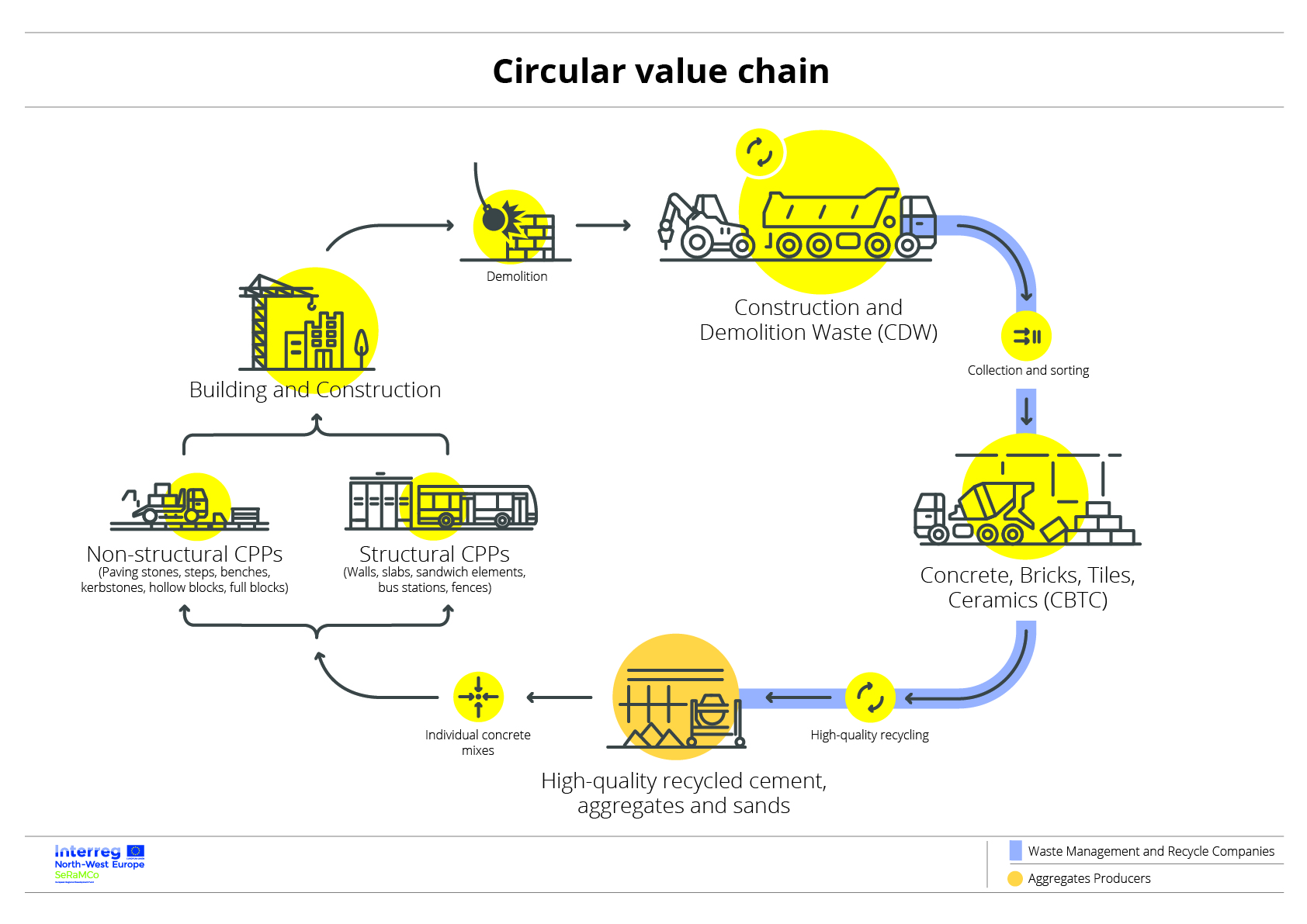By Schuttelaar & Partners
Against the background of rising ecological pressure and threatening scarcity of primary raw materials, concrete precast products made from recycled construction and demolition waste have good chances to successfully penetrate the emerging market of green construction products in North-Western Europe.
On a political level, European policies such as laid out in the Circular Economy Package and the Monitoring Framework, the Construction and Demolition Waste Protocol and the recently amended Waste Framework Directive support the transformation of construction and demolition waste into high-quality secondary raw materials.
However, from an economic point of view, the persisting low prices for primary raw materials in all member states do not yet reflect these ambitions. Furthermore, taxes and economic incentives are missing to stimulate the demand for secondary aggregates. In addition, due to the lack of technical standards, public procurement in North-Western Europe does not yet include requirements for secondary raw materials in their tenders.
Beyond that, the public opinion and a majority of professionals in the construction industry perceive concrete and concrete precast products made from secondary raw materials as of lower quality and less safe.
Moreover, the circular value chain (Figure 1), in comparison with the traditional linear value chain, involves more stakeholders, namely waste management and recycling companies whose performance is key for the timely delivery of high-quality materials at large scale to a highly competitive building industry. This means that beside the need for newly designed green concrete precast products, the production and supply chain processes have to be innovated. The hurdles for introducing green concrete precast products therefore seem to be high.

